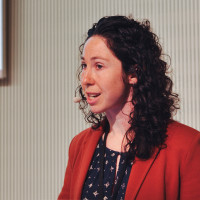Every day we are experiencing the intersection of IoT and AI. The interactions of users, sensors, robots, vehicles, smart buildings, and much more is creating a new status quo for digital experiences. This growing range of smart devices – both in the IoT sense and the intelligent AI sense – mean we are moving beyond a singular focus on the smartphone. This heightened immersion into increasingly distributed, decentralized digital networks is what KuppingerCole has termed “Ambient Intelligence”.
The synergy of AI and IoT that Ambient Intelligence enables will be a key driver for the machine-to-machine (M2M) economy, with businesses and consumers already demanding it in daily tasks. However, advancing the M2M economy is held back by the lack of a reliable, secure identity protocol for objects and devices. Without this sort of protocol, companies use strange workarounds to meet the demands of users – using a smartphone as a proxy for a vehicle, for example.
When a phone isn’t a phone
Artist Simon Weckert publicized photo and video evidence of his performance art piece on 1 February 2020, showing himself pulling a wagon filled with 99 smartphones through Berlin. His message of how the presence of a smartphone impacts the way traffic is represented in Google Maps received over three million views. With so many smartphones, he easily turned a “green”, traffic-free section of road to “red” and congested, rerouting actual vehicles to side streets. Weckert’s purpose was to illuminate the influence that digital tools such as Google Maps have over our choices in the physical world, but this performance invites other takeaways, such as the misrepresentation of devices.
Artist Simon Weckert publicized photo and video evidence of his performance art piece on 1 February 2020, showing himself pulling a wagon filled with 99 smartphones through Berlin. His message of how the presence of a smartphone impacts the way traffic is represented in Google Maps received over three million views. With so many smartphones, he easily turned a “green”, traffic-free section of road to “red” and congested, rerouting actual vehicles to side streets. Weckert’s purpose was to illuminate the influence that digital tools such as Google Maps have over our choices in the physical world, but this performance invites other takeaways, such as the misrepresentation of devices.
IOTA’s role in delivering an identity protocol
IOTA has very promising contributions to digital identity, for humans as well as devices and objects. It is an open-source, blockchain-like protocol that among other things can host the emerging Unified Identity Protocol that would enable a secure M2M exchange of data – including ambient devices. Established in Germany as a non-profit foundation to provide “the next generation of protocols for the connected world”, IOTA is both the name of the foundation and the DAG-based technology layer which is free for public use. It stands out as a digital (and decentralized) identity solution for a number of reasons:
- The use of Directed Acyclic Graphs (DAG) solves the chronic scalability weakness of typical blockchains – the more transactions are executed with IOTA, the faster each transaction is executed. A participating node’s transaction is only confirmed when it approves two previous transactions. Therefore, the more transactions in IOTA, the faster each can be approved.
- Transactions are fee-less, again because of the blockchain-like DAG structure. Unlike the typical proof-of-work consensus mechanism which incentivizes honest participation by awarding cryptocurrencies and charging transaction fees, a participating node’s incentive in IOTA is to have its own transaction approved.
- Microtransactions (such as sharing the battery status of an electric vehicle every few minutes) are possible because transactions are fee-less. The potential for objects and devices to share data on a constant basis using IOTA is much more feasible if there are not prohibitive costs associated with it.
- IOTA is bringing Self-Sovereign Identity for human and device and object identity. It arranges an identity ecosystem made up of Holder, Issuer, and Verifier roles following emerging standards for DID and Verifiable Credentials. By employing cryptographic techniques such as zero-knowledge proofs, users – and objects – can prove an identity attribute is true without over-revealing information.
- The partner ecosystem includes key players that are highly invested in bringing IoT and Industry 4.0 to maturity. Siemens alone has been granted 13 patents for IOTA-based identification and authentication technologies.
Multiple decentralized identity solutions are under development, but this typically means blockchain. While they have their merits, IOTA is a non-blockchain option for decentralized identity that may outpace them all. To learn more about the future of digital and decentralized identity, join KuppingerCole at the European Identity & Cloud Conference in May 2020 for over 200 sessions and insight from a wide array of global experts.

















































